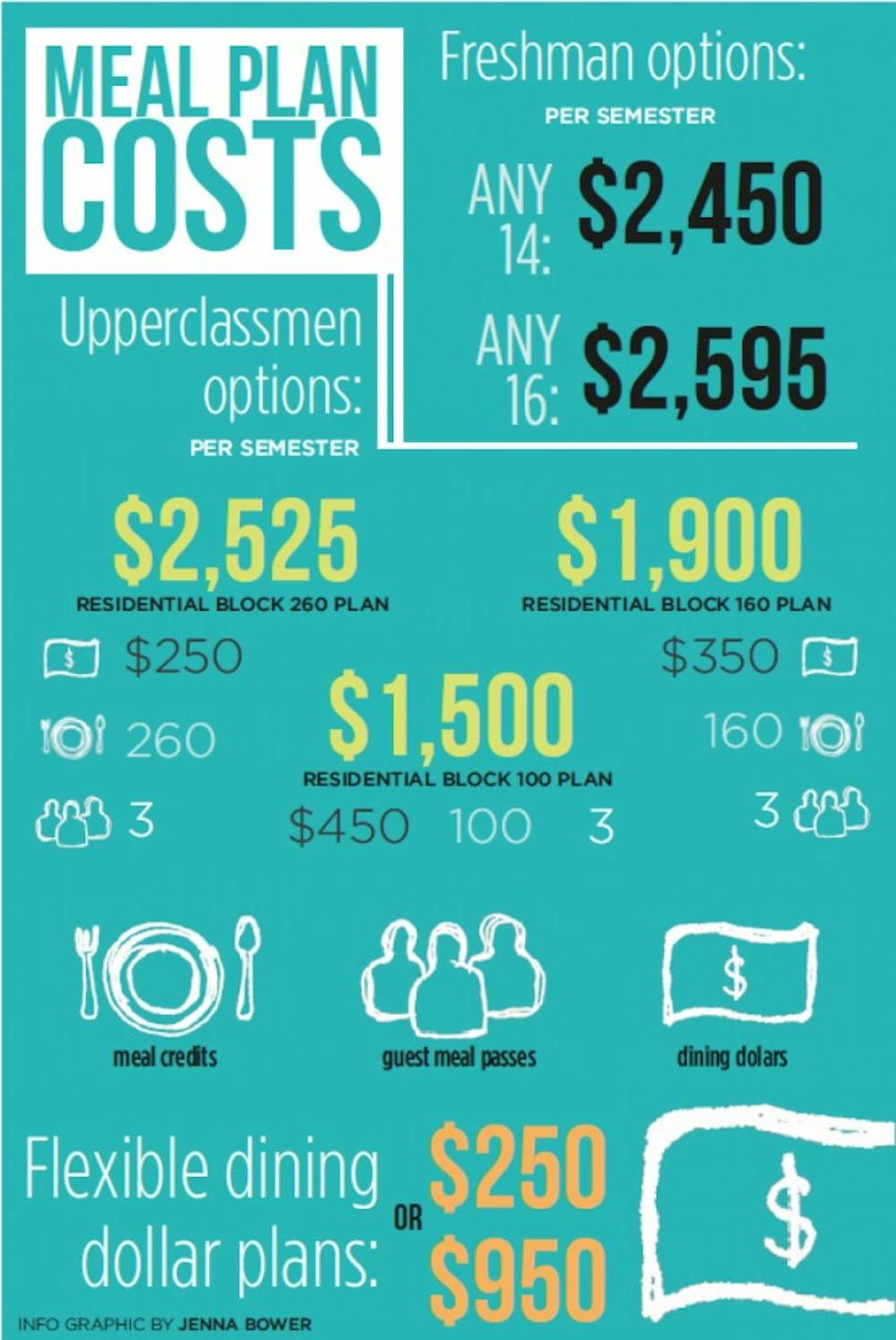 Last semester, Anita Sharma, a sophomore health and human services major, canceled her meal plan when she realized how often she went to The Commons for Indian food. She noticed food at CVS, within walking distance of on-campus locations, was cheaper than food on campus.
Last semester, Anita Sharma, a sophomore health and human services major, canceled her meal plan when she realized how often she went to The Commons for Indian food. She noticed food at CVS, within walking distance of on-campus locations, was cheaper than food on campus.
She said her meal plan was useless.
Popular Campus Dining & Shops (CDS) locations such as Capen Café, Bert’s and Tim Horton’s serve convenient dishes for students on the go, but many students feel they sacrifice cash for convenience.
“Last semester, I would always get tired of eating campus food, so I would always end up going to The Commons to get Indian food,” Sharma said. “I would end up spending money anyways.”
To save money, Sharma buys her beverages from CVS instead of CDS.
CDS charges $1.75 for a bottle of water while CVS charges $1.65 and $1 when on sale.
“It may seem like [we] are charging a lot more than necessary, but keep in mind that you aren’t just paying for the food itself,” said Raymond Kohl, the marketing manager for CDS. “You are paying someone to prepare the food, serve the food and clean up after the food. Everything in your restaurant, from payroll, benefits [and] utilities, needs to be covered by the food and beverage you serve.”
Catherine Joseph, a sophomore occupational therapy major, said food prices on campus are unreasonable when there are other options from which to choose.
“Living in a city like Buffalo, I feel like there are so many alternative food options that can allow you to save yourself the money you’d be spending on the food in [places like] Capen Café,” Joseph said.
Students can save money by doing comparison-shopping at local grocery stores.
For example, at CDS locations like Capen Café, a cup of red grapes costs $2.29. At Tops Friendly Markets, with locations in University Plaza across from South Campus and on Maple Road off of North Campus, a one-pound bag of red seedless grapes costs $2.79.
Food cost refers to the menu price of a certain dish in comparison to the cost of the food used to prepare that same dish, according to Kohl.
Generally, the cost to produce CDS foods is only 28 to 32 percent of what students are paying. For example, for a dish that costs $1 to produce, CDS will need to charge a minimum of $3.10 to $3.50.
Students who don’t use up all their meals by the end of the week are, essentially, wasting money.
Freshmen living on campus have only two meal plan options, so they are more restricted than upperclassmen.
“I had the 19-meal plan during the first semester of freshman year and by the end of the week, I always had meals left over,” said Abeda Alam, a sophomore undecided major. “I ended up buying tons of food that I didn’t need to make sure my meals didn’t go to waste.”
Although students may not be happy about the cost when dishing out cash for CDS products, CDS officials said it works to ensure a low cost for students.
“We are always looking at volume buys for both dry and frozen products since we have a massive warehouse to store these items right here on campus,” Kohl said. “When purchasing tractor trailer loads of food, there is a significant savings in the price.”
Chicken breasts – one of CDS’s high-usage items – cost $2.20 per pound when buying chicken by the case, according to Kohl.
“When forecasting our business out, we look at how long it would take us to go through 44,000 pounds [a truckload] and plan that out in our menu cycle,” Kohl said. “Then [we] have the power to negotiate the best price from the manufacturer based on the large volume.”
Buying in bulk allows CDS to qualify for a 10 to 15 percent discount on the price and pass the savings on to their stakeholders, he said.
CDS also competitively shops for vendors every week before purchasing so it can get the highest quality food at the lowest price, Kohl said.
Prices can vary between CDS locations, however, so students can save money by being conscious of where they make their purchases.
Big Blue – UB’s new food truck, which debuted last fall and will return later this spring – sold dumplings for $4.25 while Capen Café charged $4.99 last semester.
But for students who prefer to make their own food, local grocery stores are the best options.
Anthony Macias, a junior biomedical engineering major, likes to prepare dishes from his native country of Ecuador.
“Every weekend, I drive down to Wegmans and buy some ingredients to make my favorite dishes,” he said.
When rushing between classes, however, convenience can override saving money.
Alam prefers purchasing food on campus over traveling to local grocery stores.
“I know it’s probably more economic for me to go to Wegmans or Tops and try and find cheaper food alternatives, but to be honest, sometimes that seems like way too much work,” Alam said. “When I’m on my way to take a physics exam on a Saturday morning that likely overpriced Tim Hortons cappuccino just calls out my name.”
For Sharma, safety concerns can have an impact of where she goes grocery shopping. After living on Lisbon Avenue, a few blocks away from South Campus in the University Heights district, she started feeling less comfortable about shopping in convenience stores.
“The corner store by my house was super shady and every time I went there, I somehow felt unsafe,” she said. “I probably could have saved myself a ton of money had I shopped there more often, [but] the lack of security kind of got in my way.”
Students can still be economical on campus if they use their meal plans at dining centers such as Crossroads Culinary Center (C3), Governors Dining Center and Goodyear Dining Center, according to Kohl.
“There is always a great selection of entrees, desserts and beverages,” Kohl said, “The feedback we get from students and parents is that they like that they can use their meals anywhere on campus as a meal credit – offering greater options and flexibility.”
Students on campus have loads of nearby food options – it’s just a matter of how much money they want to spend.
email: news@ubspectrum.com





